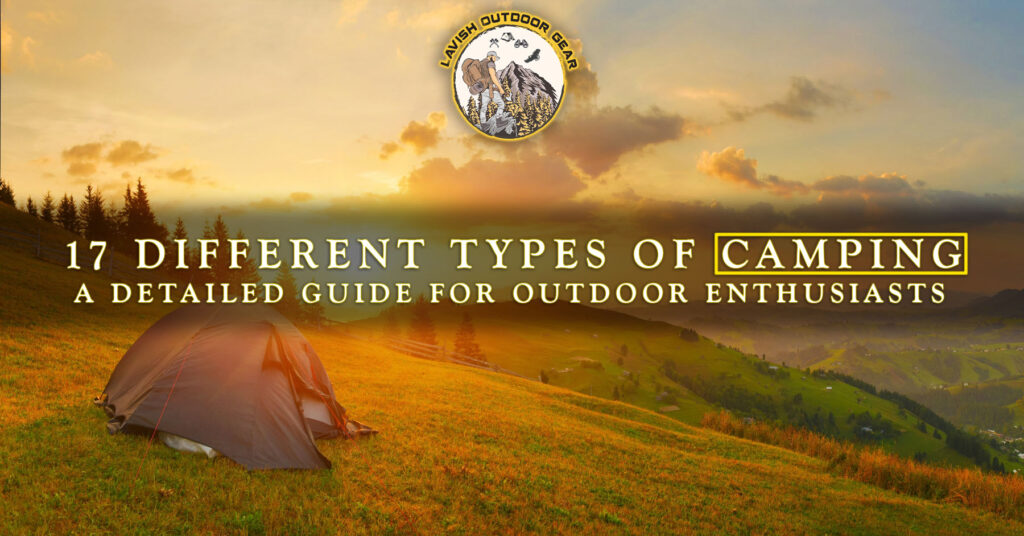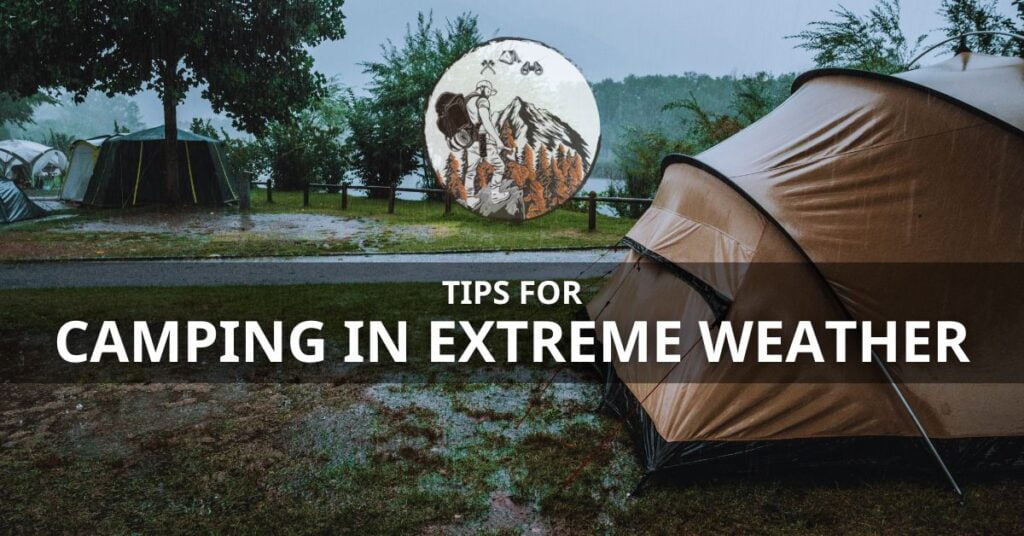Venturing into the great outdoors during winter is not a choice that everyone would make, but for those who seek the beauty and peacefulness of winter landscapes, the challenge is part of the allure. Winter tent camping, or cold-weather camping, brings forth a set of challenges distinct from its warmer counterparts.
Understanding the critical tips for winter tent camping empowers the adventurous soul to embrace the cold with confidence. Each tip is a building block in constructing a solid foundation for your outdoor experience, ensuring that the winter elements enhance rather than hinder your adventure.
This comprehensive guide, enriched with tested strategies, is tailored to equip you with essential knowledge and skills for braving the frosty environment and making the most of your winter camping journey. Let’s get started!
Table of Contents
I. Introduction to Winter Tent Camping
While summer camping might be characterized by pleasant weather, vibrant natural aesthetics, and a relaxed atmosphere, winter camping offers its distinct rewards.
The quiet serenity of a winter landscape, the challenge of survival in more extreme conditions, and the chance to experience the world in a less familiar state are just a few reasons why winter camping holds appeal.
Understanding the Appeal
Winter camping provides a unique chance to establish a deeper connection with nature. While most people prefer to stay indoors during the winter season, winter campers take this opportunity to explore the outdoors.
The quietness of a snowy forest or the sparkling beauty of a frozen lake not only leaves a mesmerizing impression but also provides a sense of calmness and solitude. For some, braving the harsh weather conditions becomes a personal challenge and a source of immense satisfaction.
Importance of Preparation
To have a successful winter camping trip, preparation is crucial. You’re not just packing for any camping trip, but rather, you’re preparing to face harsh weather conditions. Weather patterns can change quickly, and an unexpected storm can quickly alter the situation.
To be ready for whatever Mother Nature throws your way, it’s important to know how to interpret weather forecasts and signs, carefully prepare your gear, and plan your route diligently.
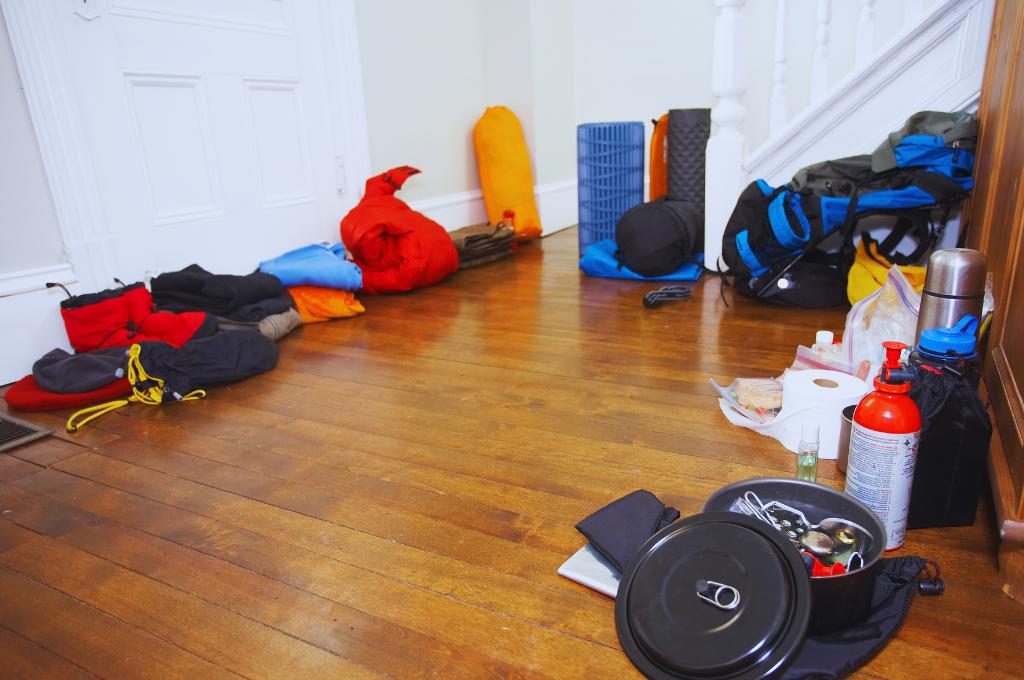
II. Gear Essentials
A winter camper’s equipment list is far from your typical summer packing list. As the temperature drops, staying warm and dry becomes the priority. Here’s how to choose the gear that will be your lifeline in the sub-zero environment.
Choosing the Right Tent
Your tent is your first defense against the elements, and it’s crucial to choose one that’s up to the task. Look for a four-season tent that’s designed for cold temperatures, with a sturdy frame that can handle snow loads and high winds.
It’s also wise to select a tent with a full-coverage rainfly, and maybe even a vestibule to store your gear and provide more interior space.
Sleeping Bags and Insulation
Invest in a sleeping bag rated for temperatures lower than what you expect. Layer your sleeping setup with a thermal mattress and a liner to maximize heat retention. Air can be your worst enemy in winter camping, so ensure your sleeping bag is air-tight, and any gaps in your tent are sealed.
Proper Clothing Layers
A proper layering system is your best bet for staying both warm and dry. Start with a moisture-wicking base layer, add an insulating layer, and finish with a waterproof and windproof shell. Be ready to adjust your layers as needed to prevent sweating, which can lead to chilling in the long run.
Footwear Selection
Your feet are your source of mobility, so keeping them warm and dry is critical. Insulated, waterproof boots with a good grip are essential. Consider bringing two pairs—one for hiking and a pair of camp shoes to allow your hiking boots to dry out overnight.
Optional Gear for Added Comfort
In addition to the essentials, the following items may not be necessary for survival, but they can significantly enhance your winter camping experience:
- Portable Heater: A portable heater can provide additional warmth, especially in the evening as temperatures plummet. Make sure it’s designed for tent safety.
- Snow Shovel: Ideal for clearing snow from your campsite, and it can be crucial in an emergency to dig out gear or a shelter.
- Thermal Flask: A good-quality thermal flask will keep your drinks hot for hours, providing warmth and hydration.
- High-Energy Snacks: Calories are essential when your body is working hard to keep warm, so pack extra high-energy snacks like nuts, chocolate, or energy bars.
- Insulated Seat Pad: Sitting directly on the cold ground can sap your body heat. An insulated seat pad will keep you warmer during meals or when resting.
- Emergency Satellite Beacon: In remote areas with no cell service, an emergency satellite beacon can be a lifesaver, signaling for help if needed.
- Anti-fog cloth for Goggles or Glasses: To maintain clear vision, especially while navigating or setting up camp.
- Camera with Extra Batteries: Cold weather drains batteries quickly; bring extras to capture the breathtaking winter scenery.
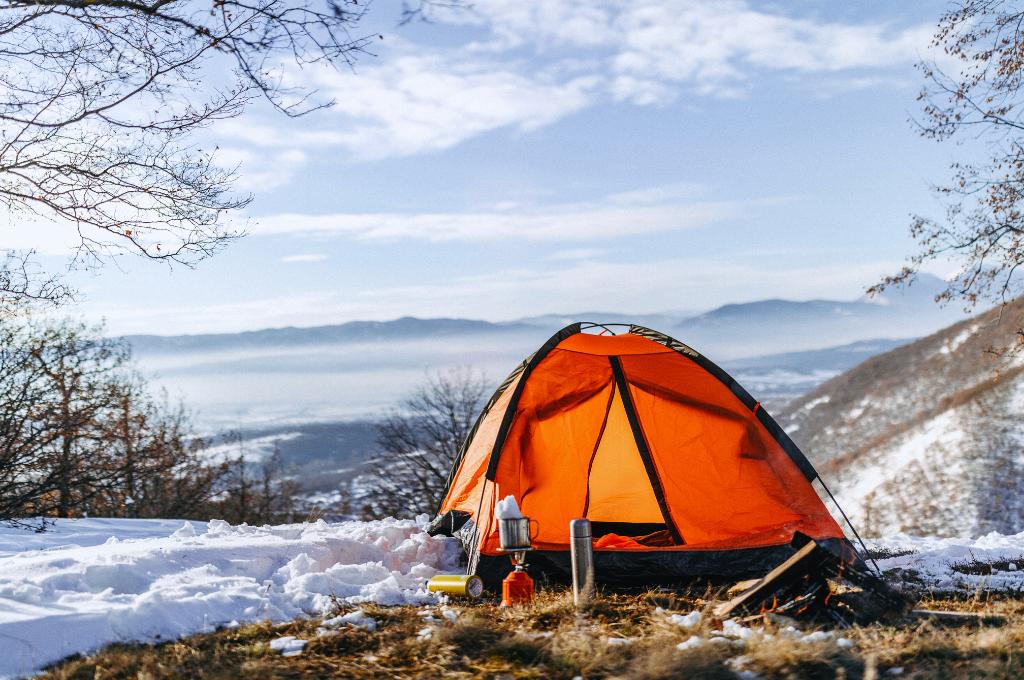
III. Campsite Selection and Setup
The way you set up your camp can have a significant impact on your comfort and safety.
Sheltered Locations
When it comes to camping in winter, your tent location can make a world of difference. Look for natural windbreaks like dense tree lines or rock formations. Remember that the direction of the wind can change, so plan accordingly.
Avoiding Low-Lying Areas
Cold air settles in low areas, making them frost pockets. Camping higher can help you avoid the coldest air and can make a surprising difference in overnight temperatures.
Ground Preparation Techniques
Laying down a tarp or groundsheet under your tent can protect against ground moisture, while a layer of snow under your tent can be further insulation. Just be sure to pack it down so you don’t sink during the night.
Windbreak Strategies
If a natural windbreak is unavailable, you can build a snow wall or use your vehicle as a barrier. However, be careful not to dig too much, as you might accidentally expose yourself to colder ground temperatures.
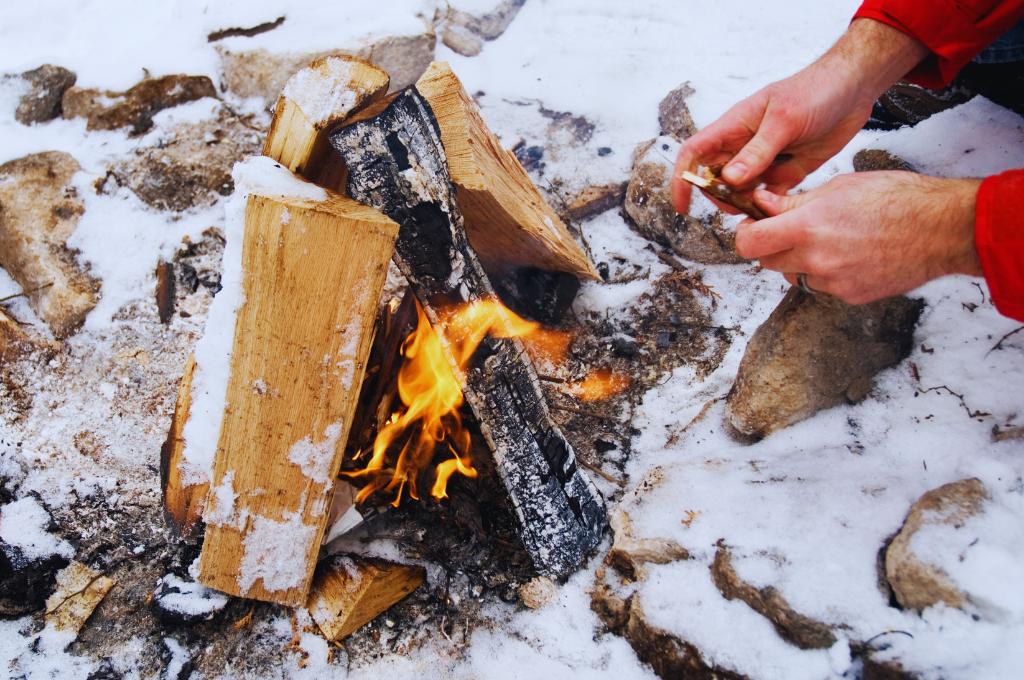
IV. Fire and Heating Methods
Staying warm in your winter camp is not only about comfort—it’s about survival. But fire in a snowy environment can be challenging and even hazardous.
Safe Campfire Practices
Ensure that you have the tools necessary to start and maintain a fire, including waterproof matches and kindling. Keep your fire contained in a fire ring or a portable stove to prevent accidents. Never leave a fire unattended.
Portable Heating Options
Propane stoves, liquid fuel stoves, or portable heaters can be used safely inside your tent, as long as you follow the manufacturer’s recommendations. Always have proper ventilation to prevent carbon monoxide build-up.
Cooking Considerations
You’ll need to adjust your cooking habits to the winter elements. Hot water can freeze quickly, so keep it continuously warm. Also, consider bringing pre-cooked meals that you only need to heat up to a safe temperature to eat.
V. Nutrition and Hydration
Winter camping burns more calories and hydration than you might expect. Proper nutrition is vital to keeping your energy up.
High-Energy Foods for Cold Weather
Pack high-calorie, easily digestible, and quick-energy foods like nuts, chocolate, and energy bars. These snacks can provide a quick boost of energy and usually don’t require cooking, which can be a hassle in cold weather.
Hydration Strategies
Your body’s hydration needs don’t diminish in the cold, so keep yourself hydrated. An insulated water bottle and a cozy can help prevent your water from freezing, and you can drink warm water or tea to keep your core temperature up.
VI. Safety Measures
Understanding and mitigating the risks associated with winter camping is paramount.
First Aid Preparedness
Stock your first aid kit with supplies that address potential winter injuries, such as frostbite, hypothermia, or dehydration. Being able to recognize the symptoms and respond appropriately can be lifesaving in an emergency.
Navigation and Communication Tools
Always have a map and compass, and know how to use them. GPS devices are reliable, but in the cold, batteries can drain quickly. A satellite phone or a personal locator beacon (PLB) can also be lifesavers in an emergency.
Wildlife Awareness
In winter, wildlife is more likely to be active, seeking food, water, or shelter. Learn how to store your food safely, recognize signs of wildlife, and avoid confrontations. Make noise when you’re hiking to alert animals of your presence.
VII. Keeping Warm and Dry
In winter camping, your body’s ability to retain heat can mean the difference between a comfortable night’s sleep and a dangerous chill.
Insulation Techniques
Learn how to incorporate natural and artificial insulation into your camp setup. Techniques like creating snow caves or wearing layers that trap warm air near your body can maintain your comfort.
Managing Moisture
Perspiration, snow, or precipitation can lead to wetness, which will quickly cool the body. Ensure your clothing stays dry, and if it doesn’t, know how to dry it out over your portable stove or another heat source.
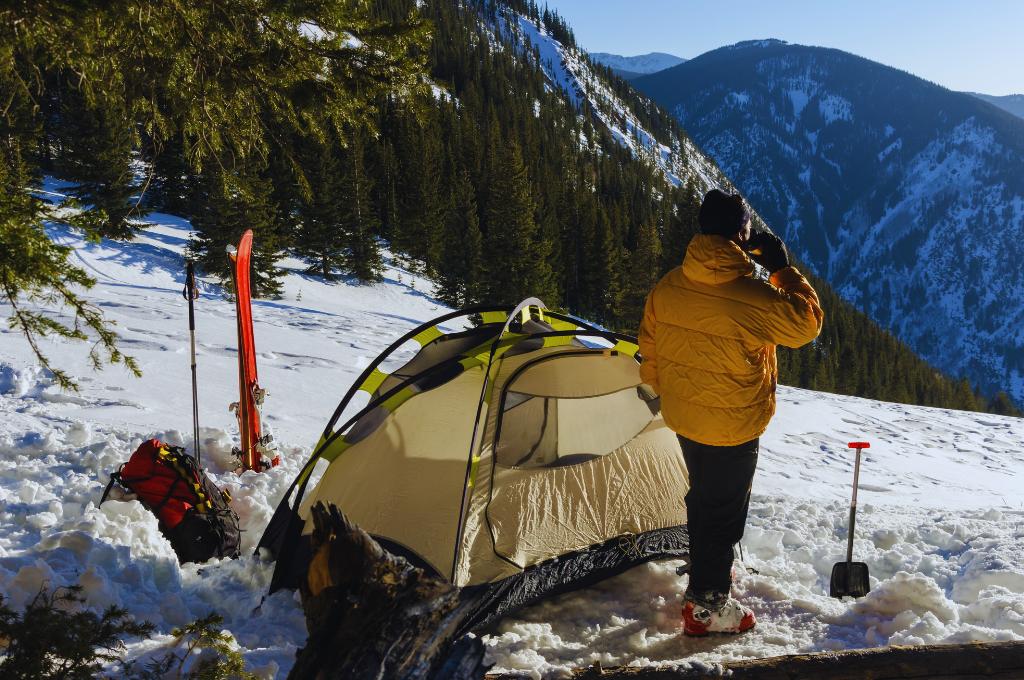
VIII. Winter Camping Activities
Winter camping is not just about surviving—it’s about enjoying the unique activities that only this season can offer.
Snowshoeing and Skiing
Use skis or snowshoes to explore the landscape without sinking into deep snow. It’s a great way to access areas you wouldn’t be able to reach otherwise and can be an enjoyable form of exercise.
Wildlife Observation
The winter landscape can make it easier to spot animals. Stay at a distance and use binoculars for a better view. Winter campsites can also provide great opportunities for wildlife photography.
IX. Mental Preparedness
Confronting the isolation and harsh environment of winter camping requires a certain mental fortitude.
Coping with Isolation
Bring along activities to keep your mind occupied during the long winter nights. A good book, journaling, or playing cards can be a welcome distraction.
Maintaining Morale
Keep spirits high by planning simple yet enjoyable activities. Maybe it’s a game of snow football or trying out some new campfire recipes. Creating and working towards specific goals can also keep you motivated.
X. Environmental Awareness
Your presence in the winter wilderness should be as unobtrusive as possible.
Leave No Trace Principles
Adhere to the Leave No Trace principles, particularly when waste disposal is more challenging in winter conditions. Be diligent about carrying out all your trash and any human waste.
Respect for Wildlife
Wildlife is more vulnerable in the winter months. Respect their space and avoid exerting additional stress on them. Keep food and waste out of their reach to maintain their natural behaviors.
XI. Nighttime Considerations
The challenges of winter camping don’t disappear when the sun sets. Here’s how to tackle the cold nights.
Stargazing Opportunities
Winter nights can provide some of the clearest views of the stars. Take advantage of these amazing displays, but remember to stay warm and bring a cozy viewing seat.
Sleeping Comfortably
A good night’s sleep is crucial for maintaining your energy levels. In addition to your insulation techniques, bring a favorite pillow or other comfort items to set the stage for restful slumber.
XII. Emergency Preparedness
No matter how well you prepare, emergencies can still occur. Having a plan in place can be the difference between safety and danger.
Creating an Emergency Plan
Develop an emergency plan that includes procedures for signaling distress and seeking help. Make sure someone knows your itinerary and has a timeline for when to expect your return.
Winter-Specific Emergency Scenarios
Think through potential winter emergencies, such as getting lost or experiencing a whiteout, and know what actions to take. Your fire, signaling devices or a well-constructed shelter can be critical in such times.
XIII. Maintenance and Care for Equipment
Your gear is your lifeline in the winter wilderness. Proper maintenance can keep you safe and comfortable.
Gear Cleaning Tips
Snow and ice can lead to gear damage if not properly maintained. Clean and dry your gear thoroughly after each use to prevent damage and maintain function.
Storage Suggestions
Store your winter camping gear properly in a cool, dry place to prevent mold and mildew growth. Check your gear for signs of wear and tear periodically, so you’re not caught off guard on your next trip.
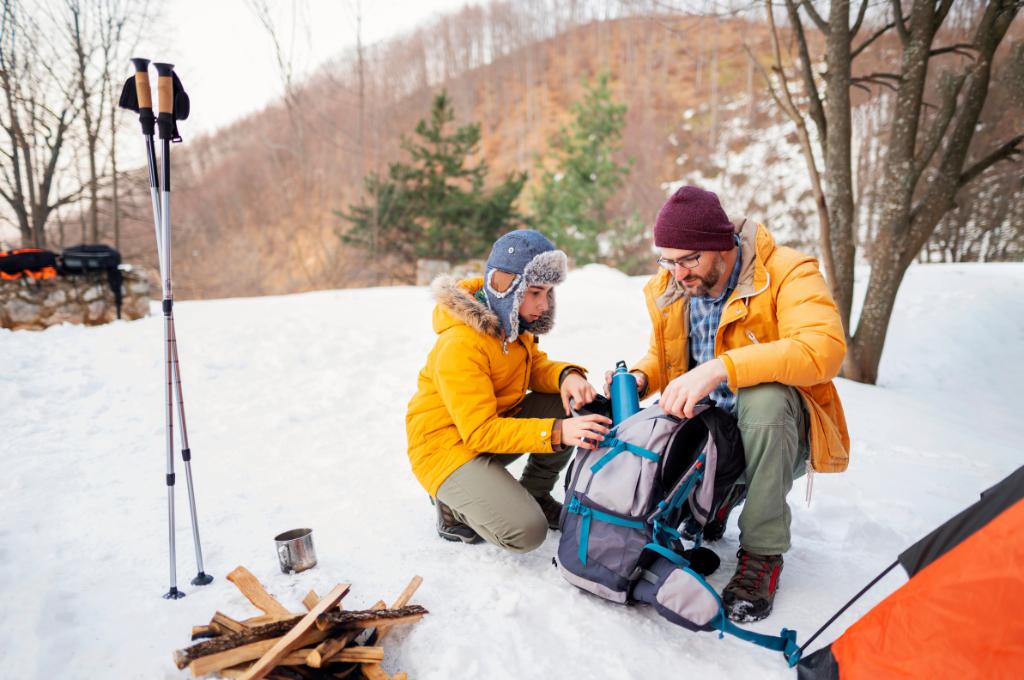
XIV. Tips for Family Winter Camping
Winter camping with your family can create treasured memories, but it requires additional considerations.
Child-Friendly Activities
Make sure you have activities tailored to your children, such as scavenger hunts, snow art, or even an outdoor storytime in the evening.
Safety Measures for Kids
Children are more susceptible to the cold. Ensure they’re wearing proper clothing and sleeping securely in a warm environment. Keep them involved with camp chores to ward off boredom and keep their spirits up.
XV. Sustainable Winter Camping Practices
Winter environments are fragile, and sustainable camping practices are essential.
Eco-Friendly Camping Tips
Minimize your environmental impact by using bio-degradable soaps, conserving water, and avoiding unnecessary noise or light pollution that could disturb wildlife and other campers.
XVI. Solo Winter Camping Guide
Solo winter camping is a deeply personal experience. Safety, however, takes on added importance.
Solo Safety Considerations
When you’re alone, there’s no one to rely on but yourself. Ensure that you’re well-versed in winter camping skills and consider taking additional safety classes.
Solo Adventuring Tips
It is important to have a clear plan for your trip and communicate regularly with someone you trust. Additionally, plan for potential emergencies that could occur while alone in a harsh environment.
XVII. Group Winter Camping Dynamics
Camping with a group has its advantages in the wintertime. Utilize the collective knowledge and skills of the group to have a safe and enjoyable trip.
Division of Responsibilities
Delegating tasks among group members can enhance your camping experience. Some may be better at setting up the camp, while others might cook meals or manage the fire.
Group Decision-Making
Ensure everyone in the group feels heard during decision-making processes. Conversations about hiking routes, camp locations, and potential weather changes are vital.
Conclusion
As you prepare to venture into the brisk and beautiful world of winter camping, this guide has equipped you with the tools and knowledge to make the most of this unique experience.
Whether you’re a seasoned camper or a newcomer seeking adventure, winter camping offers a profound connection with nature. Remember, proper preparation and respect for the environment are the keystones of a successful winter journey.
Remember, the key to successful winter camping is adaptability. Conditions can change rapidly, and the most we can do is be well-prepared and willing to adjust our plans. May your trails be clear, your campfires warm, and your memories lasting. Cherish each moment as you make your tracks in the vast winter wilderness.
Thank you for taking the time to peruse our tips for winter tent camping. If you found the insights and tips within these pages beneficial, we encourage you to share this guide with friends and family.
Happy wintry camping!
FAQs
How can I stay warm during winter camping nights?
Layer properly, use high-quality sleeping bags and mattresses, and employ insulating techniques in and around your tent. Wearing a hat can prevent a significant amount of heat loss.
Is winter camping safe for beginners?
With the right preparations and knowledge, winter camping can be safe and enjoyable for beginners. Consider taking a class or going with an experienced winter camper for your first few trips.
What should I do if I encounter wildlife during winter camping?
Stay calm and do not approach. If animals get too close, make yourself look bigger, make noise, and back away slowly. Ensure your food is stored properly to avoid drawing them to your campsite.
How do I prevent condensation in my tent during winter camping?
Ventilate your tent properly, keeping vents open even in cold weather. Ensure your breath is not creating moisture inside your tent by directing it outside or by using a proper cold-weather sleeping system that doesn’t allow moisture to escape into the air inside your tent.
What are some common mistakes to avoid in winter camping?
Common mistakes include overpacking, underestimating the cold, and not being self-sufficient. Be honest with yourself about your abilities and the capabilities of your gear.
Can I use a regular tent for winter camping?
While it is possible to use a three-season tent for winter camping, a four-season tent is highly recommended. The heavier materials and different designs of a four-season model will provide better protection from the elements and help you stay warmer.
How do I choose a suitable location for winter camping?
Consider accessibility, regulations, terrain, and potential for finding a suitable campsite. Research locations in advance and always have a backup plan in case your first choice doesn’t work out.
What should I do in case of an emergency during winter camping?
Having a plan in place for various emergency scenarios is crucial. Remain calm, implement your plan, and use your knowledge of winter survival to the best of your ability. If you can do so, signal for help and wait for rescue.
Is winter camping suitable for families with young children?
Winter camping with young children can be done safely and enjoyably. Ensure that you tailor the experience to their levels, keep them involved with camp chores, and maintain a flexible attitude. It can be a rewarding family adventure if approached with the right mindset and precautions.
What are the essential items for winter tent camping?
Essential items for winter tent camping include a cold-rated sleeping bag, insulated sleeping pad, sturdy tent with a snow skirt, warm clothing layers, waterproof outerwear, portable stove for cooking, high-calorie foods, thermos for hot drinks, snow shovel, a headlamp with extra batteries, and a first aid kit.


